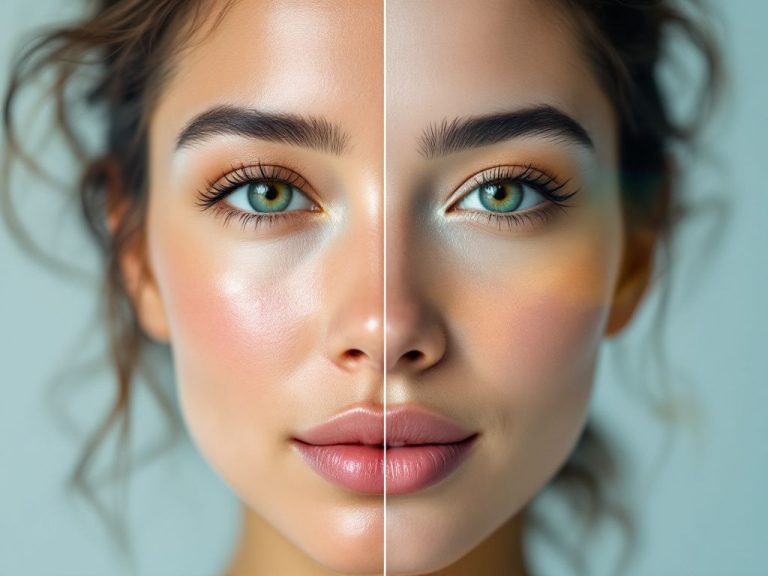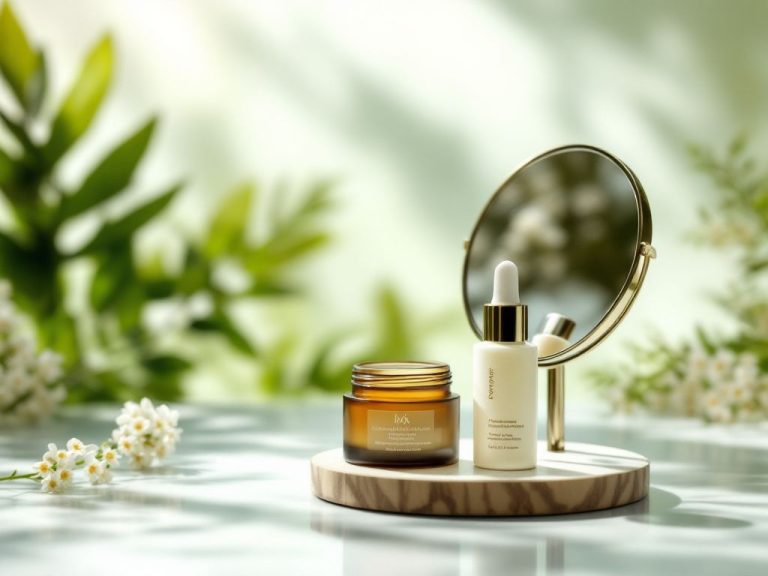Hey there! So, you’ve noticed it, too, right? Every time the season even hints at changing, like when summer decides it’s had enough and winter begins to creep in, your skin screams for attention. It’s almost like clockwork. One minute you’ve got that summer glow. The next, your skin’s as dry and flaky as your favorite pastry. Why does this happen, and more importantly, how can you handle it? Stick around, and let’s break it down together.
Table of Contents
ToggleWhy Dry Skin Changes with the Seasons
Ever wonder *why* your skin starts to act up as the seasons change? It all boils down to the way weather impacts your skin’s natural moisture barrier. In summer, the air is humid, your skin’s producing more oils—it feels like a breeze, right? Enter autumn, and all that shifts. Cooler air, drier conditions, and suddenly we have to start thinking about new ways to keep that skin hydrated.
Your skin more or less mirrors the environment around you. Imagine stepping outside in the chillier months. The air sucks moisture like a sponge, and your once supple skin feels the brunt of it. So yeah, how your skin reacts to the changing seasons is pretty much just a reflection of the world outside.
Environmental Impact and Your Skin
Consider the cold. It seems harmless at first glance—just a brisk breeze here, a little frost there. But it’s actually a bit of a villain when it comes to moisturizing. When temps drop, humidity is usually right behind it on a downward slope. That means there’s less moisture in the air and more reason for your skin to dry out. And don’t even get me started on the wind; it’s like being gently whipped by nature.
Even indoor environments play a part. Heating systems drain indoor air of moisture as badly as a teenager drains phone data. It’s these multiple little environmental tweaks that lead to the battle with dry skin.
Adapting Skin Care Routines: Seasonal Edition
So, what’s a person to do? If you’ve ever flipped the script on your skincare because of weather impact, you’re in good company. Changing up your routine to adapt to the shift in seasons is the best first step.

Start with Your Cleanser
Here’s a tip you can count on: switch to a gentler cleanser. I know you love that foamy face wash, but when seasons change, especially towards the cooler spectrum, they can overstrip natural oils. Try a milder cleansing option—something creamy that hydrates rather than dehydrates. Trust me on this one; it’s a game-changer.
Layering Your Moisturizers
I like to think of moisturizers as outfits for your skin. Just like you’d layer up knits and jackets when it’s crisp outside, you should be layering your hydration. Start with a lightweight serum to pack a punch of moisture, followed by a middleweight lotion or cream. Top it off with an oil if you’re feeling a bit extra or if you’ve got naturally dry skin. What you want to do is create a barrier that locks in all that good stuff.
Products to Consider for Each Season
| Season | Recommended Products |
|---|---|
| Autumn | Creamy cleansers, hydrating serums, rich moisturizers |
| Winter | Oil-based moisturizers, thicker hand creams, and moisturizing masks |
| Spring | Gel-based creams, lighter lotions, and exfoliating treatments |
| Summer | Light hydration gels, sunscreen, and mattifying serums |
Sunscreen: Not Just Seasonal
Think sunscreen is just for summer? Nope, absolutely not. Even if the thermometer argues otherwise, the UV rays are still lurking around like those forgotten snacks you rediscover behind the fridge. The skin can suffer damage all year round, so keep applying that SPF, especially when sunlight gleams off white snow.
Lifestyle Tweaks for Happier Skin
Beyond what you lather on, it’s also about what’s going on *in* you and around you.

Hydration from Within
Water is the universal answer to, well, everything, isn’t it? It plays an underestimated role in keeping the skin’s glow, so drink up—aim for at least eight glasses a day. Kind of fits every category of well-being advice, but like, it works.
Diet Considerations
A diet that’s good for the skin includes plenty of omega-3 fatty acids. Think fish, nuts, and seeds. These sorts of foods are like little assists to your moisturizer, helping your skin to retain moisture and stay more elastic.
Humidity Check
Speaking of environmental factors, how about bringing a little summer back into the home during the chilly months? A humidifier could be exactly the gadget you never knew you so desperately needed. It adds back into the air what the heating drains out. Think of it as a balancer for your seasonal adaptation routine.
Common Skincare Mistakes Across Seasons
Even with the best intentions, there are a few missteps many of us make.
Over-Exfoliating
Yes, exfoliating is essential to get rid of those pesky dry skin flakes, but don’t go overboard. Especially in the harsher months, too much exfoliation can lead to irritation and actually make your skin drier. Talk about counterproductive, right?

Ignoring Allergies
Nature has its say in how your skin behaves, too. Seasonal allergies might cause sneezes and watery eyes, but did you know they can also irritate your skin? When pollen is floating around in the spring or ragweed is out to get you in the fall, look out for skin reactions.
Moisturizing Mistake
Have you ever applied moisturizer to dry skin believing it’s doing you any good? Moisturizer’s real mission? Lock-in time. Apply it right after a shower when your skin’s slightly damp so it can lock in all that water. Dry skin just won’t hang on to it.
Embracing Seasonal Changes
At the end of the day, part of the process is flowing with the seasons. Taking these proactive steps can turn an oftentimes cumbersome seasonal transition into something much more bearable—dare I say, enjoyable.
Self-care Ups and Downs
This whole practice could feel like a love letter to yourself every change of the season, and should it be different? Pampering your skin through the seasonal changes may take a bit more effort, but it’s totally worth it for the long game of healthier skin.
Rekindle with Nature
Let’s circle back to embracing nature itself. It’s crucial to allow the seasons to paint not just the landscape outside but your personal care approach. Adaptation doesn’t just preserve your skin’s vitality; it enriches it against every twist of weather.
There you have it—a guide woven with bits of indulgence and necessity to help your skin tango with the seasons effortlessly. It’s about spending a bit more effort in recalibrating your skin routine to secure its bounce and glow all year round. You’ll get it down to a T soon enough, making dry skin changes of the season a breeze no matter the time of year!
Frequently Asked Questions
How does the change in seasons affect dry skin?
The change in seasons significantly impacts dry skin. During the colder months, the air holds less moisture, leading to dryness and dehydration of the skin. This is exacerbated by indoor heating, which further dries out the air. In contrast, warmer months bring higher humidity, which can help keep the skin hydrated, but may also lead to oiliness and other skin issues[1][4][5).
What are the key factors that contribute to dry skin during seasonal changes?
Key factors include the drop in temperature and humidity, use of central heating, hot showers, and exposure to harsh winds. These conditions disrupt the skin’s natural barrier, leading to dryness, irritation, and potential cracking of the skin. Additionally, indoor heating and exposure to smoke from fireplaces can further dry out the skin[1][4][5).
How can I prevent dry skin during the seasonal transitions?
To prevent dry skin, it is essential to adopt a seasonal skincare routine. For colder months, use thicker, cream-based moisturizers that contain humectants like glycerin or glycol. Avoid hot showers and consider using a humidifier to add moisture back into the air. Keep moisturizers readily available and reapply as needed, especially to areas like the hands and feet. Staying hydrated and incorporating healthy fats into your diet can also help[3][4][5).
What products are best for managing dry skin during different seasons?
For colder months, opt for thicker moisturizers rich in hydrating ingredients like glycerin, panthenol, and niacinamide. In warmer months, switch to lighter, gel-based cleansers and moisturizers with hyaluronic acid to avoid clogging pores. Use sunscreens and serums with antioxidants to protect against sun damage and promote skin health[2][3][4]).
References- Cambridge Laser Clinic. How Your Skin Changes with the Seasons.
- Cetaphil. How Different Seasons and Weather Can Affect Your Skin.
- Mount Sinai. Should I Change My Skin Care Routine With the Seasons?.
- Houston Methodist. 8 Tips for Preventing Dry Skin in the Winter.








